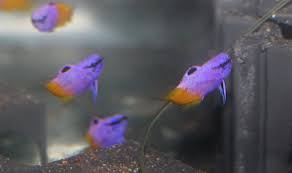The Dragon in Ancient Chinese Mural Art: A Symbol of Power, Prosperity, and Spirituality

In the ancient art of China, few symbols are as significant and evocative as the dragon. This legendary creature, a blend of mythical power and divine wisdom, has been a dominant motif in Chinese culture for thousands of years. One of the most profound and enduring expressions of the dragon in Chinese art can be found in ancient mural paintings. These murals, often created in temples, tombs, and palaces, not only showcase the technical skill of Chinese artists but also illustrate the deep spiritual and cultural beliefs of ancient China.
Dragons in ancient Chinese murals are far more than mere decorative elements—they carry with them rich symbolism, embodying ideals of strength, imperial authority, divine protection, and the connection between heaven and earth. This article explores the significance of the dragon in ancient Chinese mural art, its symbolic role in these artworks, and how the presence of dragons in murals contributed to the development of Chinese religious and cultural practices.
The Role of the Dragon in Ancient Chinese Culture
Before delving into the specific context of ancient Chinese murals, it is essential to understand the significance of the dragon in Chinese culture as a whole. The dragon has long been associated with power, prosperity, good fortune, and divinity. In Chinese cosmology, dragons were thought to control the elements, particularly water, rain, and storms. Their role as controllers of nature made them an essential figure in agriculture, where rain was vital for crops, and they were seen as harbingers of prosperity.
In imperial China, the dragon also became a symbol of the emperor’s authority, as the emperor was often referred to as the Son of Heaven and was believed to rule with divine approval. The dragon’s image was thus used extensively in imperial art and architecture to reflect the emperor’s divine power and his responsibility to ensure the welfare and prosperity of the people.
As a symbol, the dragon’s significance in ancient Chinese art went far beyond its appearance in murals. It represented the cosmic order, imperial authority, and the interplay between heaven and earth. This symbolism was especially important in the context of mural art, where religious and imperial themes converged to create powerful visual narratives that reinforced cultural and spiritual beliefs.
The Dragon in Ancient Chinese Mural Art: A Historical Overview
Ancient Chinese murals can be traced back to several dynasties, each contributing its own unique style and approach to dragon imagery. Some of the earliest examples of murals featuring dragons can be found in the Han Dynasty (206 BCE – 220 CE), where the dragon was depicted in tomb murals as a symbol of divine protection for the deceased in the afterlife. During this period, the murals were intended to ensure the continued prosperity and safe passage of the deceased to the next world.
In the Tang Dynasty (618–907 CE), the use of dragons in murals became more elaborate and intricate. The Tang period was a time of great artistic flourishing, with the emergence of Buddhism and Daoism as major influences on the art world. Dragons in Tang murals often appeared in religious contexts, representing both divine power and protection for the Buddha and other deities. These dragons were frequently shown guarding sacred spaces and temples, emphasizing their role as spiritual protectors.
During the Song Dynasty (960–1279 CE), dragon imagery in murals took on a more refined and naturalistic style, with artists paying greater attention to the dragon’s anatomy and the flow of its movements. Murals from this period were often found in temples, where dragons were shown alongside other mythical creatures and deities, symbolizing harmony between the forces of nature and the spiritual world.
The Dragon as a Symbol of Power and Authority
In ancient Chinese murals, the dragon was often used to symbolize imperial power and the authority of the emperor. The dragon’s connection to the emperor was so strong that the emperor’s personal seal was known as the dragon seal, and the emperor’s throne was often referred to as the dragon throne. This powerful association between the dragon and imperial authority made it a central motif in murals created for palaces, imperial tombs, and official government buildings.
One of the most famous examples of dragon imagery in imperial mural art can be found in the Forbidden City in Beijing, the ceremonial heart of imperial China. The walls of the palaces and temples within the Forbidden City are adorned with murals featuring dragons in various forms, symbolizing the emperor’s connection to heaven and his divine right to rule. These dragons are often shown coiling around clouds or rising from the ocean, reflecting the emperor’s connection to the natural world and his role in maintaining balance and prosperity for the people.
Dragons in Religious Mural Art
The dragon’s role in religion is a dominant theme in Chinese mural art, particularly in the context of Buddhist and Daoist temples. In both traditions, dragons were seen as protectors of sacred spaces, often depicted guarding shrines or accompanying religious deities. The symbolism of the dragon as a guardian of sacred places reflects its power to ward off evil spirits and protect the faithful from harm.
In Buddhist temples, dragons were sometimes shown as guardians of the Buddha. This association highlights the dragon’s dual role as both a spiritual and imperial symbol. In Daoism, dragons were considered to be spiritual beings that controlled the natural world and were often depicted in murals as part of Daoist cosmology. The murals were designed to evoke a sense of spiritual protection and cosmic harmony, reinforcing the belief that dragons played a central role in maintaining the balance of the universe.
Iconography of Dragons in Ancient Chinese Mural Art
The iconography of dragons in ancient Chinese murals is rich with symbolism and meaning. Dragons were often depicted as long, serpentine creatures with scales, horns, and claws, and they were frequently shown surrounded by clouds or waves. The dragon’s body, flowing and fluid, symbolized the natural forces of water and the heavens, while its claws and horns signified strength, power, and authority.
One common motif in imperial murals was the dragon chasing a pearl, a symbol of wisdom, spiritual enlightenment, and the attainment of divine knowledge. This imagery was often used to convey the idea that the emperor, like the dragon, was in pursuit of wisdom and prosperity for his people. In Buddhist murals, the dragon often accompanied other mythical creatures, such as the phoenix, which symbolized harmony between opposites and the balance of the universe.
The five-clawed dragon was a symbol of the emperor’s imperial authority, and its appearance in murals often indicated that the space was reserved for the emperor or his family. The nine-dragon mural is another iconic motif in Chinese art, symbolizing the nine sons of the dragon, each representing different aspects of imperial power, such as military strength, diplomacy, and prosperity.
The Dragon and the Afterlife in Mural Art
Dragons were frequently featured in tomb murals, particularly in the Han Dynasty, where the belief in an afterlife was central to Chinese religious practices. These murals were designed to ensure that the deceased would be protected in the afterlife and that their journey would be prosperous. In tombs, dragons were often painted as guardians, watching over the deceased and providing spiritual protection.
In many tomb murals, dragons were shown ascending into the heavens, signifying the deceased’s journey to the afterlife, where they would be granted divine favor and eternal peace. The dragon’s role as a spiritual guide during this journey was believed to ensure the safe passage of the deceased’s soul and guarantee them a prosperous afterlife.
Legacy of the Dragon in Chinese Mural Art
The legacy of the dragon in Chinese mural art continues to influence contemporary Chinese culture. Today, dragon imagery is still widely used in both public and private spaces, particularly in temples, palaces, and cultural sites that seek to preserve traditional Chinese artistic practices.
Ancient Chinese murals featuring dragons have also influenced the artistic traditions of neighboring cultures. Countries like Korea, Japan, and Vietnam have adopted and adapted Chinese dragon motifs, blending them with their own local beliefs and artistic styles. The enduring power of the dragon as a symbol of strength, prosperity, and spirituality continues to resonate through these cultures, reflecting the deep and lasting impact of ancient Chinese art.
Conclusion
The dragon in ancient Chinese mural art is a powerful and enduring symbol that encapsulates the spiritual, imperial, and cultural beliefs of ancient China. From its role as a protector of sacred spaces to its symbolic representation of the emperor’s authority, the dragon in Chinese murals conveys a deep connection between the natural world, the divine, and the imperial realm. These artworks were not only aesthetically pleasing but also served as visual expressions of power, prosperity, and spiritual protection, reinforcing the cultural values that shaped Chinese society for centuries. The dragon, as depicted in ancient Chinese murals, remains a potent symbol of good fortune, strength, and divine guidance, continuing to influence Chinese art and culture to this day.

